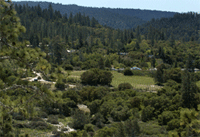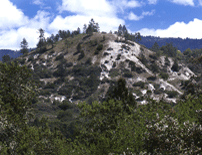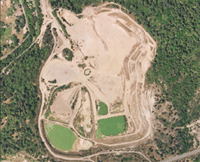
Habitat loss is the leading threat to the persistence of the endemic Sandhills species and communities. Naturally rare, the Sandhills historically covered and estimated 6,000 acres. However, approximately 40% has been lost due to conversion for human uses, including:
The conversion of Sandhills habitat fragments and degrades remaining habitat, thus further impacting the native species and communities. Much of the remaining habitat is not currently protected, and instead is vulnerable to future development.
The marine deposits of the Santa Margarita formation that give rise to the Sandhills communities also produce sand that is highly valued commercially. The sand deposits are very deep and loosely consolidated, so they provide abundant sand that is readily removable. The sand itself is desireable for several reasons including:
In sand quarrying, Sandhills vegetation, soils, parent material, and some bedrock are removed. As a result, it is difficult to re-establish vegetation during reclamation. Despite extensive efforts, it has not been possible to recreate Sandhills communities following mining.
Since its inception in the early part of the 20th century, sand quarrying in the Sandhills has occurred in six quarries, which have removed an estimated 450 acres of habitat and fragmented remaining habitat.

Sandhills habitat has been lost due to residential and commercial development in the several towns and cities in central Santa Cruz County, including Scotts Valley, Felton, Ben Lomond, Boulder Creek, and Bonny Doon.
In addition to reducing Sandhills habitat, development impacts Sandhills species and communities in adjacent undeveloped habitat by:
Despite the alteration of habitat conditions, several native Sandhills plant and animal species persist in developed areas, including the Mount Hermon June beetle. These populations may contribute to long term species persistence, by linking the otherwise small and isolated populations that persist in Sandhills habitat patches adjacent to development. Sandhills property owners can help facilitate global biodiversity by implementing a few simple steps in their own backyards.

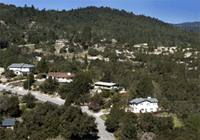
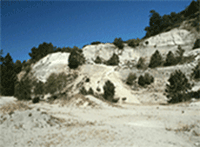
Though the Zayante soils are unsuitable for most crops, Sandhills habitat has been converted to vineyards and orchards, which can tolerate the well-drained soils. Agricultural conversion is the cause of less than 10% of Sandhills habitat loss. However, given the overall rarity of the Sandhills, even such small losses can have significant impacts on the endemic species and communities.
